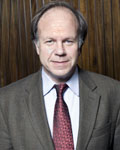2015
Timothy A. Mousseau
- Professor
- University of South Carolina

Abstract
Nearly three decades have passed since the world’s largest nuclear accident at reactor number four of the Chernobyl Power Plant and, surprisingly, there is no agreement on the impact of the disaster. The United Nations Scientific Committee on the Effects of Radiation puts the deaths caused by the accident at 64. Green Peace estimates 200,000 Chernobyl-related fatalities. Some scientists claim that the Chernobyl Zone is a thriving nature preserve. Others say it is a threatened and damaged eco-system. Chernobyl is arguably the most politically and scientifically important technological disaster of the twentieth century, so why is it so difficult to determine its cost to human life and the environment? This project is a collaboration between an environmental historian, Kate Brown, and an evolutionary biologist, Timothy Mousseau, who has carried out field work in the Chernobyl Zone since 2000 and in Fukushima since 2011. As a collaboration between a scientist and a humanist, the project will explore how both knowledge and ignorance of the impact of the Chernobyl disaster have been produced over the last thirty years. The researchers will analyze the historical trajectory of the funding, production of three decades of scientific research on Chernobyl from 1986 to the present, and in Fukushima from 2011 on, in order to describe what is known and debated about the impact of long term, low dose exposure to ionizing radiation on plants, animals, and humans. Brown and Mousseau plan to publish a series of articles in academic journals and the popular media for the thirtieth anniversary of the Chernobyl catastrophe in April 2016, as well as a co-authored monograph. Award period: July 1, 2015 through August 31, 2016

